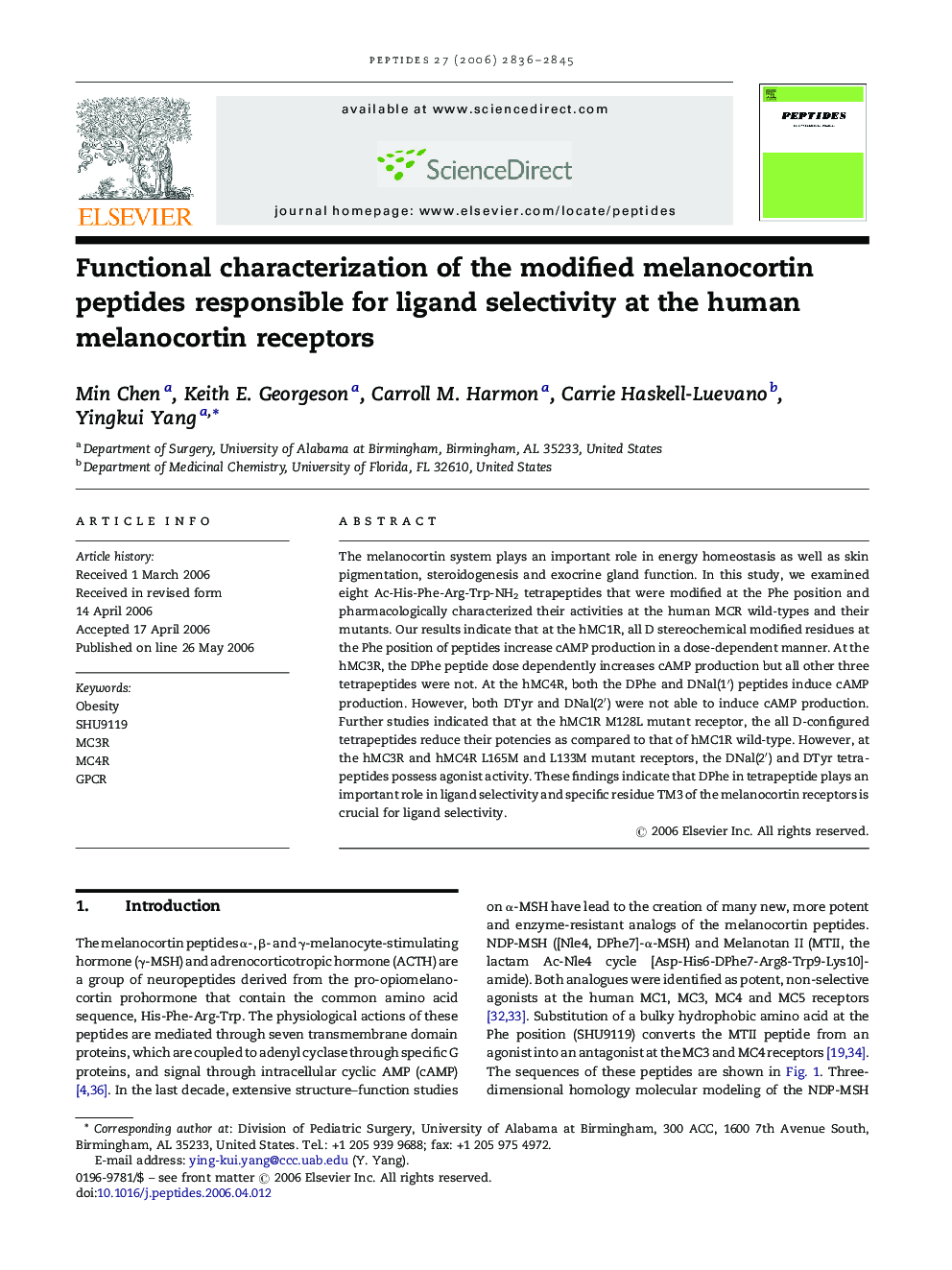| Article ID | Journal | Published Year | Pages | File Type |
|---|---|---|---|---|
| 2007841 | Peptides | 2006 | 10 Pages |
The melanocortin system plays an important role in energy homeostasis as well as skin pigmentation, steroidogenesis and exocrine gland function. In this study, we examined eight Ac-His-Phe-Arg-Trp-NH2 tetrapeptides that were modified at the Phe position and pharmacologically characterized their activities at the human MCR wild-types and their mutants. Our results indicate that at the hMC1R, all D stereochemical modified residues at the Phe position of peptides increase cAMP production in a dose-dependent manner. At the hMC3R, the DPhe peptide dose dependently increases cAMP production but all other three tetrapeptides were not. At the hMC4R, both the DPhe and DNal(1′) peptides induce cAMP production. However, both DTyr and DNal(2′) were not able to induce cAMP production. Further studies indicated that at the hMC1R M128L mutant receptor, the all D-configured tetrapeptides reduce their potencies as compared to that of hMC1R wild-type. However, at the hMC3R and hMC4R L165M and L133M mutant receptors, the DNal(2′) and DTyr tetrapeptides possess agonist activity. These findings indicate that DPhe in tetrapeptide plays an important role in ligand selectivity and specific residue TM3 of the melanocortin receptors is crucial for ligand selectivity.
